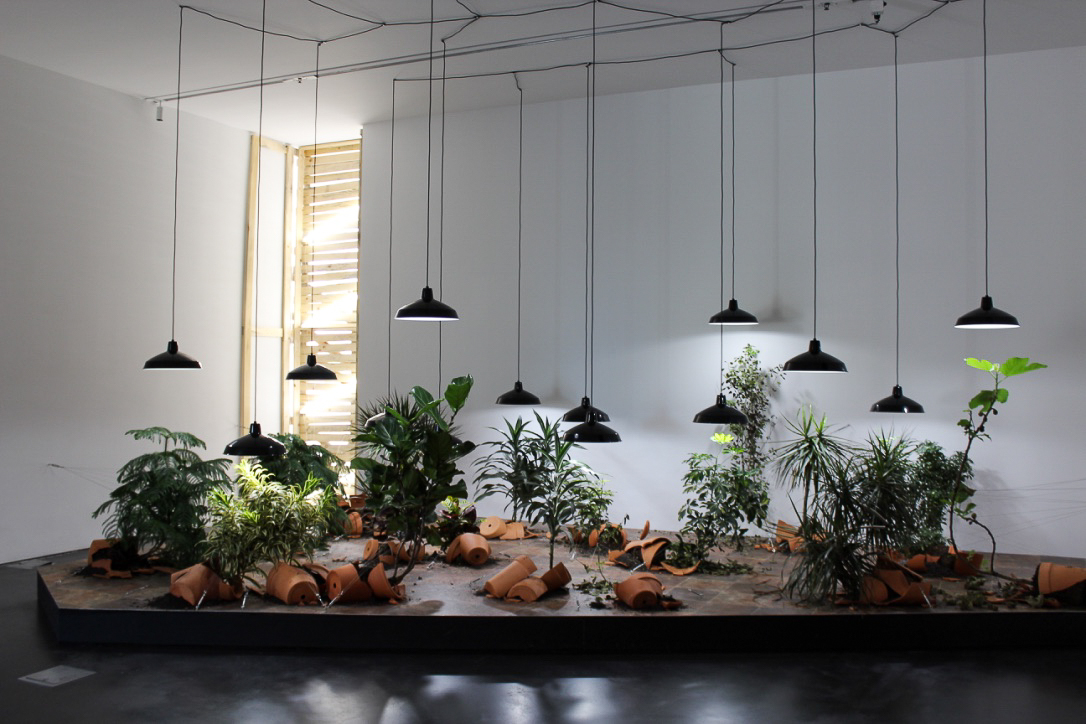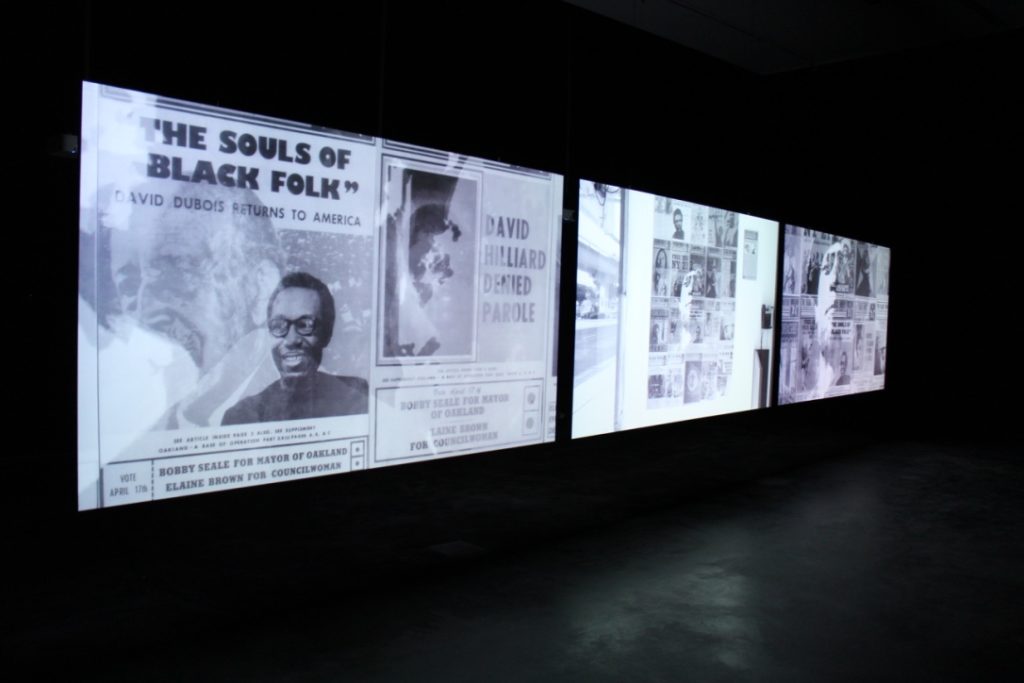Last month the Museum of Contemporary Art Denver opened two exhibits that expand how identity politics can be explored. Featuring the work of artists Adam Pendleton and Guido Ignatti, the show presents two intriguing viewpoints. Installation and abstraction are skillfully used by each artist to force the viewer to question historical and traditional boundaries of art.
Guido Ignatti
Birthplace: Buenos Aires, Argentina
Website: Guidoignatti.com.ar
The main floor of MCA Denver has Guido Ignatti’s exploration of how we view and interact with art installations. Upon entering the first room of “Setup,” the sound of projectors takes over your sensors as you view a series of images that are projected onto polywood, effectively combining 2D, 3D and 4D art traditions. By combining the three dimensions, Ignatti undermines the categorization of painting, hence the title: “No Matter Paintings.” The projectors and their light add a playful element to the simple compositions seen in the darkened room, but they also eliminate the modernist hand from what we expect in 2D art. The hand of the artist is almost completely taken out of the work. So how do we judge the capability of the artist? I think that’s what Ignatti is aiming for when he presents these works. He’s not born from a tradition of Western painting, after all. He’s Argentinian so he doesn’t need to present his work within the confines of Western art, nor should he. When you walk in front of one of the projectors and disrupt the image, you create a different experience than what the artist intended–you create a wholly different image.

The projectors juxtapose with his installation, “Recovery Systems for Facing Catastrophe,” in which live plants are set up in a way to communicate another element that we never have to think about. In this room, Ignatti presents his American audience with how to save houseplants after a disaster. The broken pots and sprawled plants force the viewer to say, “Oh, no. Those plants are all going to die.” But they probably aren’t and you realize why as you read how Argentinians have kept plants alive following disasters. American perceptions of caregiving are challenged through the installation, which is the most poignant message of the exhibit.
Once you walk out of the second installation, you’re confronted with a smart display of resistance. On a whitewashed wall that is difficult to read is “a simple love poem by the artist that transforms a Spanish insult for gay men, ‘puto,’ into a term of endearment, ‘putito mio.’” The whitewashing took days to complete, perhaps reflecting the years of effort it takes to reorient insults into terms of empowerment. Across from the whitewashed poem is a room that viewers can’t access. Instead you have to look into the interior of the structure through slits, eliminating the ability to view the exterior. The inaccessibility of the room reflects the Western inability to empathize with the political, social and economic circumstances of South Americans.
Ignatti’s show runs through September 11.
Adam Pendleton
Birthplace: Richmond, Virginia
Website: adampendleton.net
Once we move upstairs to the main floor, we became immersed in an environment that Adam Pendleton has created through an abstract look at social justice. The politically-charged show, “Becoming Imperceptible,” occupies the MCA in order to “demonstrate against established and segregated discourses.” He accomplishes this by combining found images and texts in a highly stylized, minimalist aesthetic. By weaving pre-war avant-garde language with Minimalism and Conceptualism, Pendleton accesses moments in Art History that are otherwise denied to the black community.
Each aspect of the show flows due to the black and white scheme, making each element connected. The elements slowly reveal themselves to the viewer. You need to check every corner multiple times to discover all of the secrets hidden within the vinyl installations. Don’t even try to decipher the messages–the text is far too abstracted to create any real meaning, which is why the show is so successful with deconstruction. The mirrors within the show bring the viewer into the show by distorting their image as they peer in the vinyl covered glass. It feels disorienting, but it also forces you to reflect on the meaning of the show as a whole.

The most poignant part of the exhibit, and the part that’s easiest for the viewer to grasp, is the three-screen video that presents a portrait of Black Panther member David Hilliard. The video follows Hilliard as he takes us on a tour of Oakland and connects us to the events that led to his arrest in 1968. The scenes cut in and out on the three screens, never letting the viewer fully know where they are or whether what’s being described by Hilliard is what we’re viewing. The video raises questions about history and memory, and whether any version of history is truly accurate.
No amount of words can fully describe the intensity of the show, mostly because it’s up to each viewer to decide how to engage with the work. For that reason, Denver was incredibly fortunate to receive Pendleton and his unique vision.
Pendleton’s show runs through September 25.
For more information, visit the MCA Denver website.





